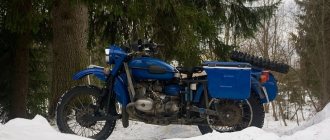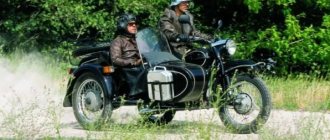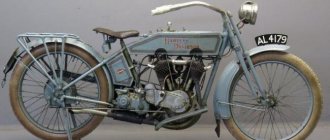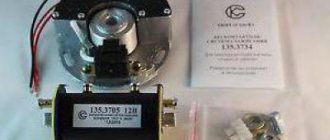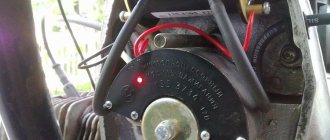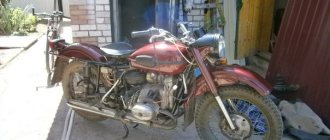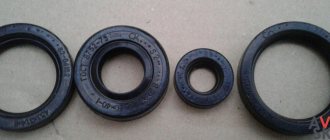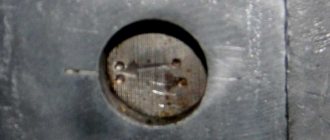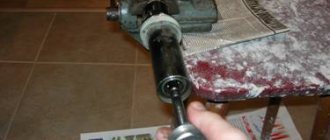Rate this post
Both “Dnepr” and “Ural” made a lot of noise in their time. These were powerful and sought-after motorcycles that many motorcycle enthusiasts dreamed of. In the Union, Dnepr and Ural competed much like Mercedes and BMW compete today. Of course, the names of Soviet motorcyclists are not so well known and popular today. However, previously these were widespread heavy motorcycles, used not only by motorcyclists in the Union, but also beyond its borders. Next, let's look at which bike was better, for what qualities this or that motorcycle was purchased, what advantages and disadvantages they had.
Engine
The design of the “Dnepr” and “Ural” was approximately similar, but there are still design differences. For example, one of the main differences is different crankshafts. On the Ural it was composite (assembled by pressing), non-separable, with roller bearings of the lower head of the connecting rod. This solution had several tangible advantages: a high degree of reliability, durability even in the absence of a sufficient amount of lubricant in the system. On the other hand, such a crankshaft was not strong enough. There are known cases of it turning at the pressing site. The crankshaft on the Ural cannot be repaired (in theory, you can unpress it, sort it out and reassemble it again, in practice no one does this kind of work).
But the Dnepr had a solid crankshaft, with plain bearings on the lower connecting rod heads. The connecting rods themselves are collapsible. In turn, such a design had the following advantages: durability of the liners; they are able to withstand increased loads, since they have an increased contact area with the shaft. If necessary, the Dnepr engine could be disassembled and the crankshaft repaired. But if for some reason the oil stops flowing in the required quantity, the liners will quickly wear out, which will lead to the need for repairs. It’s quite problematic to say for sure which bike is more reliable – “Dnepr” or “Ural”. Both one and the other had their serious disadvantages, as well as advantages.
Ural and Dnieper - what are the differences and similarities
All village residents dreamed of riding a motorcycle in childhood, and of buying this vehicle as an adult.
Many people begin to get acquainted with two-wheeled equipment in early childhood, when they get on a bicycle. At first he has a three-wheeler, then, when the habit and some skills appear, the parents put him on a two-wheeler. As teenagers, everyone asked their parents for small mopeds, hoping that when they were older they would ride a motorcycle. They seemed to be almost identical motorcycles, which at that time satisfied the needs of many citizens. If earlier owners fought for the title of the best motorcycle, today that time has passed. Both brands are remembered and honored, especially by the older generation.
Select it and press Ctrl + Enter
IMHO the Urals will be better than the Dnieper. I had experience with both, but I didn’t like the handling in the Dnieper.
Dibil. What kind of fuel with oil? Clean gasoline was poured
The author made a mistake - pure gasoline without oil was poured into the gas tanks of both URAL and Dnieper. Both have four-stroke engines!
The author apparently had nothing but a moped, gasoline and oil!
The author should be beaten with gimbals for such an article.
@YIMufa, well done! Everything is to the point, I drove them myself since I was 10 years old, dismantled the engines, changed the liners, etc. and so on. I forgot to mention the rear speed of the Dnieper, and in the Urals there was a drive to the sidecar wheel.
@YIMufa, I agree. What does the article by a person far from these motorcycles say, MT-10-36? Isn't it the power of the engine? Consumption was adjusted to suit power. And where is the difference in gearboxes, the Dnepr has a long shift stroke plus a semi-automatic gearbox, the gears were switched without pressing the clutch on the steering wheel, the Ural on a “dry” gearbox has a short pedal stroke with a characteristic loud click, plus there was no reverse gear, and on the right the lever on the box is only for setting neutral, and the Ural had one exhaust pipe. Subsequently, they made a reverse gear and two pipes. Plus, the high-speed engine of the Urals was inferior to the Dnieper for crawling through arable land, when you engage the gear, and you walk alongside, supporting it with gas. The low-slung Ural liked its stability on slopes and tipped over less often. And why are there photos of different models of motorcycles? I would also like to tell you about the MT-11 with a leading sidecar. But the Ural continues to be produced, the author goes to the plant’s website, although the prices are comparable to cars. I went to school alone in a “heavy” one, the rest preferred Javas, ChZtys, and our Izhi, one went to Pannonia (who remembers there were such ones), took 6 people up the mountain with a canopy, and pulled them out. And then no one in our town counted gasoline, 3 liters. bring homemade wine to the military fleet and take away as much gasoline as you can. We bought the Dnepr after standing in line for 2 years through Voentorg in Chisinau for 1,100 rubles, a 200 km haul, but a defect was discovered in the engine, we had to remove it and send it to the factory for exchange, after 1.5 months a new one arrived. And the Ural, which I drove for a year, was the neighbor’s while he was in Afghanistan. Don’t ask a schoolboy about his license, not a single traffic cop stopped him in all that time, and they weren’t asked at the technical inspection. I liked the Dnepr, carburetor settings, synchronization between engines, valves, any schoolchild could handle it. The only thing is that the “lambs” on the exhaust pipes are large; at the most inopportune moment, early in the morning, they broke off against an obstacle and the roar of the engine without mufflers said that it was me who was driving.
Source
Transmission
If we say that the Dnepr was still better, then mainly due to the gearbox. The most reliable unit was the MT-804 motorcycle. The gearbox received clear gears and was also particularly smooth. Many Ural owners remember with horror the gearbox on this motorcycle. She often brought big problems and troubles.
“Dnepr” became popular due to the presence of reverse gear. It worked without problems, turned on clearly, and the box actually didn’t cause any trouble. “Urals” with a gearbox in which there was a reverse gear also existed, but many owners noted that when they tried to engage reverse gear, neutral gear was engaged. Therefore, in terms of transmission, victory can be given to the Dnepr, on which the manual transmission was more reliable, unpretentious and generally successful in design.
History of motorcycles with sidecars, history of the Dnepr motorcycle
The history of Soviet motorcycles with sidecars began in 1938 in Germany. That's when the R 71 left the BMW factory with a 750 cc twin-cylinder engine equipped with a bidirectional engine. The Russians, who had just decided to modernize their army, immediately took this into account.
The official propaganda version says that in Sweden the 5 R 71 were bought by dummies, and designs and technologies were copied. The prototype Dnepr motorcycle was accepted by Stalin's comrade, and construction began.
The truth is completely different. On September 28, 1939, Soviet Foreign Minister Vyacheslav Molotov (real name Scriabin) signed a non-aggression pact with his German counterpart Joachim von Ribbentrop, which would become the fourth partition of Poland a dozen days later. Since Hitler, who intended to attack the country and then France, peace with Stalin was very necessary, he agreed to the terms set by Molotov.
The modern version of the Ural retained the shape of the front wing, but was significantly modernized externally (Ural Dnepr)
The modern Ural has retained the traditional shape of the front wing. Engineers are redesigning the Ural so they can produce up to 41 hp. In the Patrol version there is an additional trunk above the spare wheel. Thanks to the help of the Germans, production was quickly launched near Moscow, calling it M (Moscow) 72. Less than two years later, the Germans attacked their former allies. Like others, the motorcycle plant was moved beyond the Urals. On October 22, 1944, production of the M 72 resumed in the city of Irbit. A total of 9,999 of these vehicles went to the front, to the war. After the war, the plant was modernized and produced 30,000 units in 1950.
“Dnepr” or “Ural” according to reviews from motorcyclists
If you look at the reviews of ordinary motorcyclists, you can note a certain equality of bikes, because the Dnepr has many fans, a huge number of people adored and still adore the Ural. There is an opinion that the Ural is a faster motorcycle, while the Dnepr is more powerful. Motorcyclists oh, and the Ural can be brought to ideal condition if you have the necessary amount of time and money. If you have the funds and desire, you can eliminate some factory defects and bring the bike to a good level. If you have a desire to improve your motorcycle, then you can purchase both one and the other - you will be guaranteed pleasure.
Owner reviews
The motorcycle is a beast, drags a stroller and two passengers without straining, rushes along the road at 80 km/h and hardly even vibrates. If you look after the motor well, there will be no problems; old Soviet iron is very durable. I use the stroller for 6-7 months a year, I drive it mercilessly, but I maintain it constantly, so over the past few years there have only been a couple of minor breakdowns. You can find spare parts, although sometimes you have to scour the Internet and look at advertisements, you just can’t buy anything in the nearest store. Anatoly, Vinnitsa.
A real car that will last forever!! But buy strictly for those who really understand technology and are ready to bring it to mind. In its original form, it is generally a damp blank that needs to be finished and customized. But the Dnepr without a cradle with a properly tuned engine tops out at 150 mph on the highway, while it consumes no more than 7 liters of gasoline, and that’s if you turn the handle with all your money. The characteristics of the engine on paper and in reality are very different; if you approach the issue wisely, you can squeeze out of it everything that was originally intended by the designers, and even more. Ivan, Saransk.
I bought it in 2022, when for family reasons I had to sell the Honda 400, and I absolutely didn’t want to walk. It turned out that I bought more of a toy for tinkering in the garage than a motorcycle for riding, but what happened is what happened. In fact, the technology is interesting, the design is well thought out, everything is just worn out due to age and mileage. It drives well, if you unhook the cradle, it also steers surprisingly well. I can’t say anything about the original brakes; I got a converted bike with a different front wheel, with a disc brake, so it brakes quite well. Yuri, Miass.
What can be concluded
Disputes about which motorcycle is better, the Ural or the Dnepr, will continue to occur. It is worth considering that old motorcycles have already seen quite a lot, so there are fewer and fewer bikes in good technical condition every day. But when the Soviet-made Dnepr and Ural were “young”, in fact they only provided pure driving pleasure. If you decide to buy a Soviet motorcycle today, then you can safely take, for example, a “Ural”, if you like it better, but the gearbox puts you off. It will not be difficult to install the Dnepr box on this motorcycle and get rid of the hassle associated with this unit.
Ural IMZ 8.103-10.
Ural IMZ 8.103-10.
Dnepr K-650 (MT-8).
edit this post
Definition
Dnepr is a Ukrainian heavy motorcycle produced by the Kiev Motorcycle Plant.
Motorcycle "Dnepr"
Ural is a heavy Russian motorcycle produced by the Irbit plant.
Motorcycle "Ural"
History of "Ural"
This is the only heavy motorcycle that was assembled on the territory of modern Russia (Sverdlovsk region, the city of Irbit). Production began in 1940 (motorcycles were produced that copied similar heavy models from BMW). Later, their own models appeared. Currently, the plant exists and operates, it produces modern models of heavy motorcycles, the main market for the sale of this equipment is the USA.
Characteristics of "Dnepr"
Over the years of production, modifications of motorcycles have changed. In the first models, the engine had a power of 22 horsepower, and the most powerful model over the years of production produced 36 horsepower. The motorcycles had an internal combustion engine with two opposed-type cylinders (four-stroke).
Motorcycle engines consumed 7-10 liters of fuel per hundred kilometers, depending on the speed of movement and driving style. The maximum speed stated in the passport was 105 km/h. The length of the motorcycle is 2.43 meters, its width together with the passenger sidecar is 1.5 meters, the height of the vehicle from the road surface is 1.1 meters.
Specifications
The Dnepr and Ural motorcycles were produced in several modifications - Dnepr -11; 12 and 16. Larger Urals: M62; 63; 66; 67; 67-36 and IMZ-8.103.
- The length of the Dnieper is 2420-2430 , the Urals - 2420 - 2490 .
- Width – Dnieper 1500 cm , Ural – 1650 cm .
- The height of the Dnieper and the Urals is 1100 cm .
- The speed is 95 – 105 km/h for both types.
- Weight: Dnepr - 330-355 kg ; Ural - 310-340 kg .
- Fuel consumption per 100 km. ways: Dnieper – 8, 7, 9 liters; Ural - 5.8; 6; 8 liters.
- All of them are four-stroke, carburetor, two-cylinder, air-cooled.
- Engine displacement: Dnepr – 650, 750 m3; Ural - 650 cm3.
- Power: Dnepr – 26; 32 hp ; Ural - 28-36 hp .
- Both have an oil-based air cleaner with two-stage cleaning.
- The gearbox is four-speed.
- Battery: 6-12v.
- Brakes: mechanical, shoe with friction linings.
- Fuel tank: 19-22 liters .
- Oil capacity in the engine crankcase is 2.0 - 2.3 liters.
- Gearboxes - 0.8 - 1.5 l .
- Air cleaner – 0.125 – 2.0 l .
- The frame is tubular.
- Front: telescopic fork with double-acting hydraulic shock absorbers.
- Rear suspension: initially spring, and then, after modification, lever suspension with double-acting spring-hydraulic shock absorbers.
- Clutch: dry double-disc, driven discs with linings on both sides.
- Reverse gear is available on both types of motorcycles. This is what unites them.
There are few external differences in the Dnepr and Ural motorcycles. After all, there was only one manufacturer - the Soviet Union . You cannot determine the quality of a motorcycle by external signs. And the design depends on the taste and color... And the technical characteristics, for the most part, are not far from each other. Each of them has both advantages and disadvantages. It must be said that with the division of the USSR state, little attention was paid to the improvement of motorcycles. They are improved by the owners themselves, as best they can. Naturally, without violating the factory technical data.
Motorcycles Dnepr and Ural belong to the category of heavy ones , although modern models are already lightweight due to the use of plastic and light alloys. components and parts in these models are interchangeable. That is, they fit together easily. For example: gearboxes, frames, many engine parts, shock absorbers, electrical equipment, clutch.
The electrical equipment is completely compatible with each other, even if the headlights and backlights are of different shapes. The diagram is important to you. The components are also identical: relay, magneto, ignition coil. Bridges of both types are externally different, but they fit together quite well and can be changed without any problems. If you are installing an axle from a Dnepr motorcycle to the Urals, then you need to move it together with the rear wheel. The shape and number of spokes are different.
It is better to replace the gearbox complete. In detail, there may be some discrepancies. For example, their driveshafts are different, the Dnieper’s are longer than those of the Urals, and the Urals’ have a composite driveshaft. The motors and power system can be installed without any modification. Their exhaust pipes are different, but the seats are the same. They removed the engine along with the pipes and completely rearranged it.
Motorcycle price
The new Dnepr is understandably impossible to find, since production of the model ceased shortly after the collapse of the USSR. Used copies are usually sold, setting the price “out of the blue” - some want 5 thousand rubles, and others want all 50. But on average, a bike in “live” condition and with documents will cost from 25-30 thousand rubles or more . The price is reasonable, considering that you can’t buy a new motorcycle for a comparable amount, even a Chinese one.
Motor
Which engine is better - Ural or Dnepr? Over the years of production of both motorcycles, the engines have been changed and improved, but no modification of either of these motorcycles can be called extremely reliable and problem-free.
Of course, there were some specimens that could not break for decades, but this was more likely a matter of luck rather than a pattern. Let's say that it is easier and cheaper to find spare parts and components for the Ural engine in our time, so it wins in this matter.
Motorcycle modifications
- M 72 (1950-1952). The very first model produced by the Kyiv Motor Plant. Structurally, it was an almost exact copy of the BMW R71.
- M 72N (1953-1957). Reinforced frame and wheels, new linkage fork, slightly modified engine and many minor changes.
- K-750 (1958-1962). An updated 26-horsepower engine, hydraulic shock absorbers, new sidecar suspensions and reduced fuel consumption.
- K-750M (1963-1967). An upgraded version of the previous generation.
- K-650 , aka MT 8 (1968-1970). A new overhead valve 650 cc engine with a power of 27 horses, allowing speeds of up to 100 km/h.
- MT 9 (1971-1974). It was practically no different from the previous model, except that it was with this generation that the installation of turn signals began.
- MT 10 (1974-1976). One of the most popular and widespread modifications. The 6-volt electronics have been replaced with 12-volt ones.
- MT 10 36 (1976-1978). It is a slightly modified version of MT10. The engine has increased in power - it has as much as 32 horsepower instead of 27.
- MT 12 (1978-1984). The first civilian version of the bike with a low-valve 750 cc engine.
- MT 11 (1984-1986). The appearance of a hand (parking) brake, as well as the stroller’s own braking system.
- MT 16 (1986-1991). Civil version with overhead valve 650 cc engine.
- KMZ 8.157.01 Solo (1991). The very first single motorcycle in the line, not initially equipped with a side trailer.
- KMZ 8.157.02 (1991). Improved speedometer, 9th axle, modified suspensions and other little things.
- KMZ 8.157.022 Chopper (1992). The latest model, released in a small edition. It differs from the previous modification mainly in its body kit. It is practically never found on sale due to its rarity.
There were other modifications that were of no interest other than purely historical, since they were either produced in small batches for sports teams, or were used as special equipment, and were not available for free sale.
Piston material
Cast iron
The material for the production of pistons for the first internal combustion engines was cast iron. However, the parts made from it were quite heavy. With the development of technology, lighter metal - aluminum - began to be used for the production of transport parts. Thus, the aluminum piston had many advantages over the cast iron one. This is due, first of all, to the fact that the aluminum piston increased power and speed, while simultaneously reducing the load on the parts and improving heat transfer.
Aluminum
Since the beginning of the production of aluminum pistons, engine power has increased significantly, and the temperature and pressure in the cylinders of modern vehicles have become such that aluminum has approached the limit of its strength. In this regard, in the last few years, steel has been used to make pistons, since steel parts can withstand heavy loads. Steel pistons differ from aluminum pistons primarily in their lighter weight. This is due to the design of the new pistons - they have lighter walls and a significantly lower compression height (compression height is the distance from the bottom to the axis of the aluminum pin).
Design
Early modifications outwardly look like twin brothers of German motorcycles - not surprising, since they were copied from them. Subsequently, the appearance changed several times, but only slightly, and an inexperienced biker is unlikely to distinguish the Dnieper from the Urals at first glance. In that era, no one thought about design, and technical characteristics were put at the forefront, not appearance.
What to choose
On modern roads, especially in the Russian expanses, you can’t go far in cars. An all-terrain vehicle is not accessible to everyone. All that remains is a scooter or a bicycle. However, there is another effective means of transportation, especially off-road - a motorcycle. The motorcycle is much better, faster and you can attach a stroller. Why not a car? Only without a roof, in the open air.
What brands and countries of manufacturers are there? Yamahas, Harleys, Urals, Bobbers and Choppers, Dnepr, Customs, BMWs and many others. Undoubtedly, each type of such technology has advantages and disadvantages, and this is not bad, there is plenty to choose from and something to compare with. You are offered the two most common domestic types of motorcycles, more affordable on our market and proven to be the best for riding especially off-road: the Ural and the Dnepr . True, during the division of the Soviet state, the Dnepr motorcycle remained in Ukraine.
